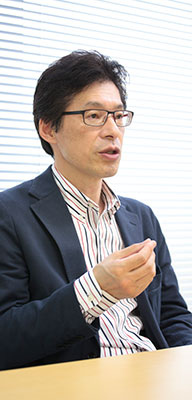Increased adoption of solar energy at a lower cost for a sustainable society
The demand for solar energy is growing today as an alternative for exhaustible resources, and to address and mitigate global warming. The cost of solar power generation equipment must decrease in order to realize wider adoption of solar energy and its self-sustaining growth.
Manufacturers currently use silver (Ag) pastes to form wires and electrodes on the surface of solar battery cells. Silver pastes, which contain more than 90% silver particles, make up approximately 10 to 30% of the material cost of these cells. However, the high cost of silver and its volatile pricing is a disadvantage for both manufacturers and consumers.
R&D and technology to overcome major hurdles for copper paste
Research and development has long been conducted to find ways of reducing the amount of silver used in manufacturing, but limitations exist. Researchers have turned to the possibility of using low-cost copper pastes, since copper has roughly the same conductivity as silver at 1/100th the cost. However, there are significant hurdles in realizing a commercially viable copper paste because copper diffuses in silicon, affecting the properties of the solar cells. Furthermore, copper oxidizes during sintering, causing the resistance to increase.
The Koike Lab of the Department of Materials Science, Graduate School of Engineering, Tohoku University has successfully developed a diffusion barrier layer formed between a silicon wafer and copper wires, and identified sintering conditions that prevent copper paste from oxidizing. The commercialization of this technology leapfrogs more than 20 years of efforts by the world's leading manufacturers.


